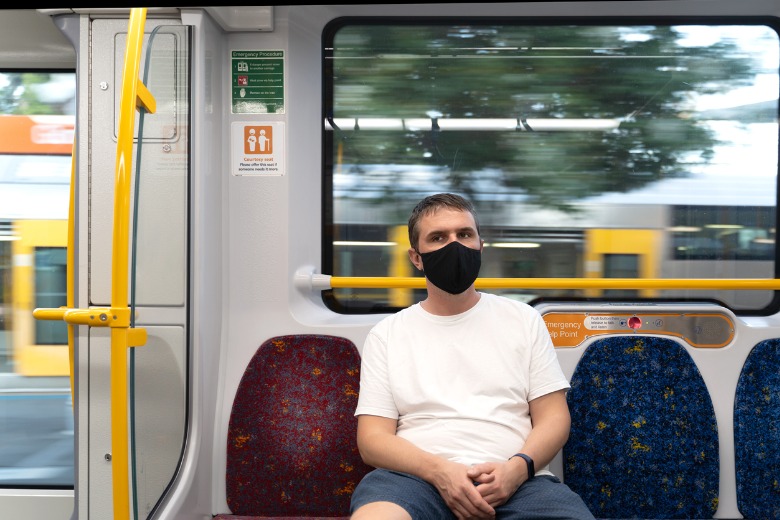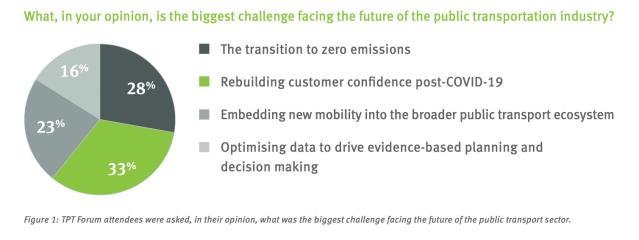
Prior to the pandemic, concerns about public transport focused on reliability and service. But Covid has thrown a new ingredient into the pot, according to a report that predicts safety will be the new hot topic button for operators in future.

“Customers’ reality with public transport has expanded beyond purely reliability and service, with safety becoming more paramount after the pandemic,” a recent report by the Australia and NZ Public Transport Association (PTAANZ) says.
The report says public transport safety was previously anchored around managing trip hazards, ensuring security at stations and stops, and wayfinding.
“However, it now extends to preventing virus transmission with ventilation, different cleaning regimes and the management of physical distancing,” the report says.
New Challenges
Covid has forever changed the way people move around cities and regions forever, PTAANZ says in its report Making Public Transport the First Choice.
The report presents findings from a forum hosted by PTAANZ in 2021 in partnership with the Victorian government and international engineering firm Aurecon that brought together local and international public transport thought leaders from Australian, the UK, Singapore, China, Switzerland and Finland.
More than a quarter of attendees agreed that the biggest challenge facing the future of the public transport sector is rebuilding customer confidence post-Covid. Optimising data, achieving zero emissions and embedding mobility into the public transport ecosystem also rated highly.

Shifting patterns of public transport use
The University of Melbourne reported in August 2020 that during the first wave of Covid-19 transmission between March and May 2020, Melbourne experienced a more than 70 per cent reduction in public transport use across all modes. There were similar scenes echoed in other cities across the globe.
This was the result of commuters avoiding crowded spaces, full-time remote working and a shift away from public and towards private transport, PTAANZ says.
However the report says this has an upside, with disruption creating significant opportunities to create more sustainable and efficient commuting behaviours.
“A public transport sector that transforms with innovation and resilience in the face of the “COVIDcomet” … will provide customers with travel options that are flexible and useful, with amenity and functionality,” the report says.
One option canvassed in the report is for public transport operators is to incentivise behaviour, such as offering loyalty and reward programs to influence demand.
It lists as an example taking 10 train trips and receiving $10 to spend at one of the station’s retail outlets.
“We need to think about the communities that we serve and keep the public transport ‘product’ attractive and modernised. Above all, we need to avoid a car-led recovery,” London Transport Commissioner Andy Byford is quoted as saying.
Public transport in the future – key predictions
Safety
Transport operators will need to address the safety concerns of customers, the report says.
This means frequently communicating and demonstrating safety initiatives to commuters, and ensuring existing and new customers feel confident when choosing public transport.
(There) are complex conversations to be held with customers about enhanced cleaning regimes that are implemented to minimise virus transmission, while remaining on balance with customer expectations around service delivery.
PTAANZ
- Tolerance for riding shoulder-to-shoulder on public transport has diminished and customers will expect public transport infrastructure to minimise virus transmission while maximising service levels
- Public transport will have to be cleaner than ever. Operators will continue with industrial grade cleaning and work with academic institutions to understand transmission research
- Lighting, visibility, wayfinding, physical distancing, contactless ticketing, queuing and cleaning, service planning will also need to be factored in
- Digital solutions will come into play to provide real-time occupancy data so that customers can plan their trips based on peak or off-peak travel, and network busyness
- Research and cleaning action data with the public will have to be shared with the public to boost confidence in the safety of travelling on public transport
Data
The report stresses the need to leverage data technology in the provision and regulation of public transport.
“Data is an important component for developing an integrated public transport network to improve travel experience,” it says.
It is crucial that the entire public transport industry … utilises the latest research and data to optimise integration, customer safety and journey personalisation, decarbonisation and digital-enablement
PTAANZ
- Public transport operators will use new and rich sources of data from travel and behaviour patterns to enable two-way engagement – providing customers with immediate personalised results in response to sharing of information
- Mobile phone apps and technology will help deliver integrated Mobility as a Service ecosystems of information
- Mobility options will incorporate every available transport mode – including bike-sharing, car-sharing, ride-hailing, and existing forms of public transport – in a transport planning and payment app.
Customer engagement and Trust
Information transparency, crowd management and understanding movement patterns will accelerate the rebuilding of customer confidence and provide needs-based public transport networks, the report predicts.
Trust extends to public transport operators adjusting service frequencies and station occupancy to avoid overcrowding. This is part of the whole ecosystem of public transport service with dynamic prioritisation and automated optimisation
Ed Debenham Executive Director Customer Strategy & Experience, Transport for NSW
- To become a real alternative to the car, and to attract other customer groups while retaining existing passengers, public transport services must be tailored to customer needs
- A customer-centred public transport network must contain the two core aspects of customer satisfaction and customer involvement .
Sustainability
Public transport will play a key role in maintaining resilient and green cities in the future.
Fostering innovation through decarbonisation will be another core component of building enduring behaviour changes. Continued displays of technological and process innovation in the public transport industry will be critical to achieving climate and other sustainability goals
PTAANZ
Sue Chan, Acting Chief Executive Officer of PTAANZ, says getting more people to choose public transport and other sustainable travel options such as walking and cycling is essential to reducing carbon emissions.
“Public transport emits less carbon dioxide per passenger than private cars and can move far more people, which reduces traffic congestion,” she said.
Embracing uncertainty
Covid-19 disruption has provided an opportunity to embrace uncertainty and seek new interventions fit for the changing future, while increasing network resilience to prepare for the next disruption, the report says.
“It is crucial that the entire public transport industry maximises opportunities to work together and utilises the latest research, technology and data to optimise public transport integration, customer safety and journey personalisation, decarbonisation and digital-enablement,” Aurecon’s Integrated Transport & Mobility Capability Leader, Sam Linke said.
Comment below to have your say on this story.
If you have a news story or tip-off, get in touch at editorial@governmentnews.com.au.
Sign up to the Government News newsletter